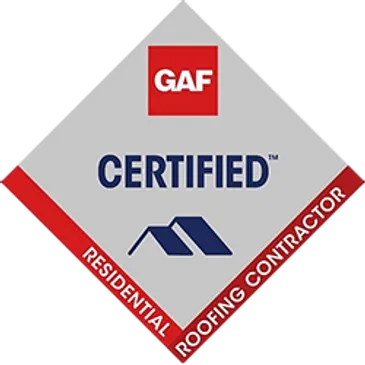As winter loosens its grip and with one last blast of snow, many homeowners in Rochester, MN are starting to think of their spring and summer projects and are contemplating roof repairs or replacements. And one pressing question often emerges: Just how cold is too cold to roof? At Gray Duck Roofing, we recognize the significance of this question and the implications it holds for ensuring the durability and longevity of your roof.
The consensus among roofers and manufactures is clear: the minimum temperature for asphalt shingle installation should be above 40°F. This guideline isn’t arbitrary; it’s often the stated guideline by shingle manufactures to ensure a quality roofing system install during colder months of the year.
The reasoning behind this is that, cold weather can render asphalt shingles brittle and inflexible. When temperatures dip too low, these shingles lose their pliability, becoming susceptible to cracks, fractures, and even breakage during installation. Picture trying to bend a frozen twig—it’s prone to snapping rather than bending gracefully.
Also, asphalt shingles rely on adhesive strips to form a watertight seal once installed. However, in cold temperatures, these adhesive strips may fail to activate properly. This means your roof might lack the essential barrier it needs to keep moisture out, leading to potential leaks and water damage down the line.
Understandably, with this unseasonably warm winter we have had, some homeowners may be tempted to forge ahead with roofing projects despite chilly conditions, perhaps eager to address existing issues or capitalize on such an uncommon winter. However, rushing into a roofing project when temperatures are too low can prove costly in the long run. What may seem like a convenient window for construction can quickly turn into a headache if materials fail to perform as expected.
So, how can you navigate the challenges of cold weather roofing? It starts with patience and planning. Keep a close eye on weather forecasts and routinely talk with your contractor to work on scheduling your roofing project during periods of milder temperatures. By waiting for the right conditions, you minimize the risk of encountering issues related to material brittleness and compromised sealants.
When it comes to roofing, experience matters. Entrusting your project to seasoned professionals like Gray Duck Roofing ensures that every aspect of the job is handled with care and precision. Our team understands the nuances of working in varying weather conditions and employs strategies to mitigate risks and deliver exceptional results, regardless of the temperature outside.
Roofing in colder temperatures isn’t just about adhering to manufacturer recommendations—it’s about safeguarding the integrity of your home. By heeding the minimum temperature guidelines and partnering with a trusted roofing company, you invest in the long-term health and resilience of your roof, protecting your most valuable asset for years to come.
If you’re contemplating a roofing project or have concerns about tackling repairs during colder months, reach out to us at Gray Duck Roofing. We’re here to provide expert guidance and ensure that your roofing experience is smooth, stress-free, and ultimately, successful.

